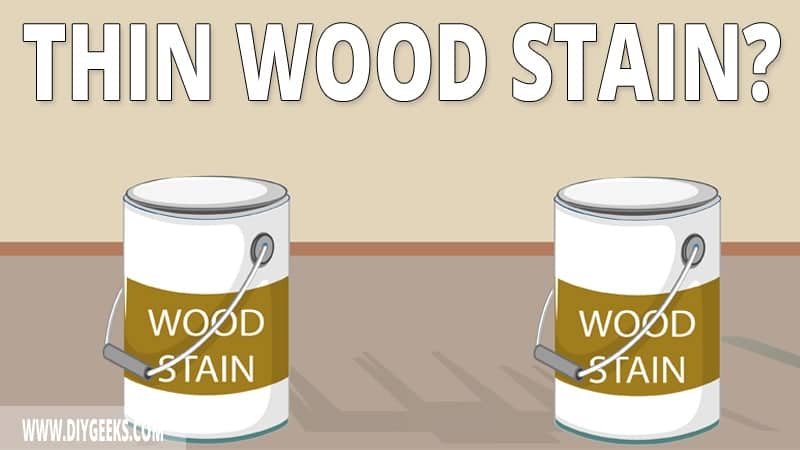Thinning wood stain refers to the process of diluting (or reducing) the thickness of its coating by adding a compatible solvent (or thinner). This is done to improve its flow and penetration in the wood and make it easier to work with.
To thin wood stain, pour stain into a clean bucket, add the thinning compound, stir the mixture, and test the mixture.
To thin water-based wood stain, use water or water-based paint thinner. To dilute oil-based wood stain, use mineral spirits. To thin lacquer stain, use lacquer thinner.
What is The Best Ratio For Thinning Wood Stain?
The best ratio for thinning wood stain is 1:4 (1 part paint thinner and 4 parts stain) or 2:1 (2 tablespoons of paint thinner for every pint of stain).
You must thin wood stain more if you are using a sprayer to apply it because sprayers have a small nozzle and aren’t able to apply (spray) thick coats. You don’t need to thin it as much if you are using a paintbrush.
Thinning doesn’t affect the wood stain color as long as you use the right amount of paint thinner. The color will be affected only if you over-thin it. However, it’s difficult to dilute wood stain for large projects and get the same color shade.
You must dilute wood stain for the following reasons:
- To get a lighter flow as it’s easier to apply it.
- To help it dry faster.
- Makes it easier to spray it.
- To achieve a smooth and fine finish.
How To Thin Wood Stain?
To thin wood stain, do the following things.
- Pour Stain Into a Clean Bucket.
- Add the Thinning Compound.
- Stir the Mixture.
- Test the Mixture.
The tools you need for this project are listed below.
- A paint bucket
- Wood stain
- A plastic funnel
- Paint thinner
- A paint mixer or turning stick
1. Pour Stain Into a Clean Bucket
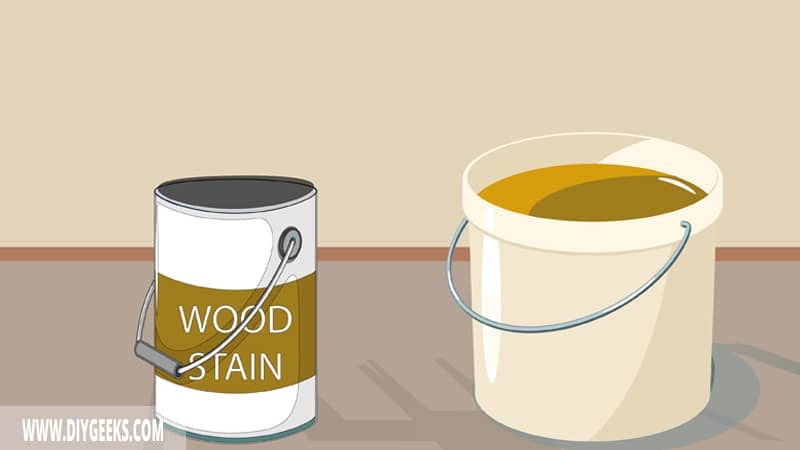
Pour the needed wood stain amount into a clean large paint bucket. This is done to only thin the needed amount without affecting the remaining stain.
Ensure the paint bucket is clean and wasn’t previously used for painting.
2. Add the Thinning Compound
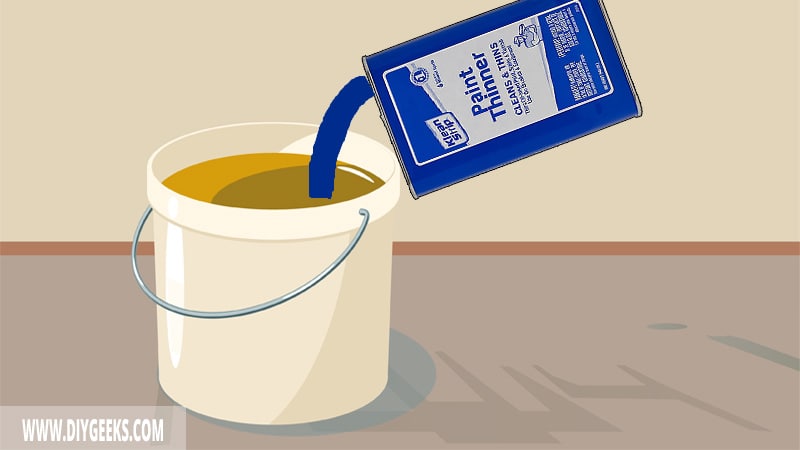
Add the thinning compound directly over the wood stain paint bucket in a 4:1 ratio (4 parts stain to 1 part thinner). To thin water-based wood stains use water, and to thin oil-based wood stains use mineral spirits.
3. Stir the Mixture
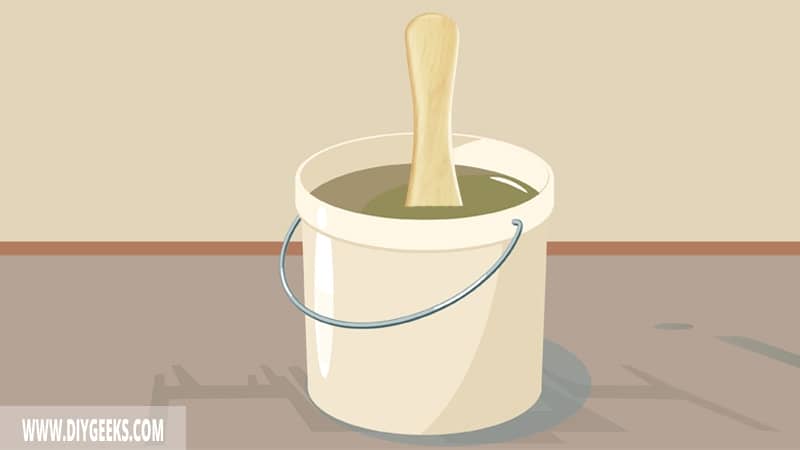
Stir the wood stain and thinning compound mixture for around 5-10 minutes with a turning stick or paint mixer. Ensure to not stir too fast or too hard as it can cause air pockets to trap in the coating.
Move the turning stick in an 8-motion figure and ensure it touches the bucket bottom parts.
To dilute the lacquer stain, pour the thinning compound and stain from bucket to bucket. To do this, put the lacquer stain in one bucket and mineral spirits in another. Then, mix both of them by pouring from one bucket to another repeatedly. This limits the possibility of bubbles in the finish.
4. Test the Mixture
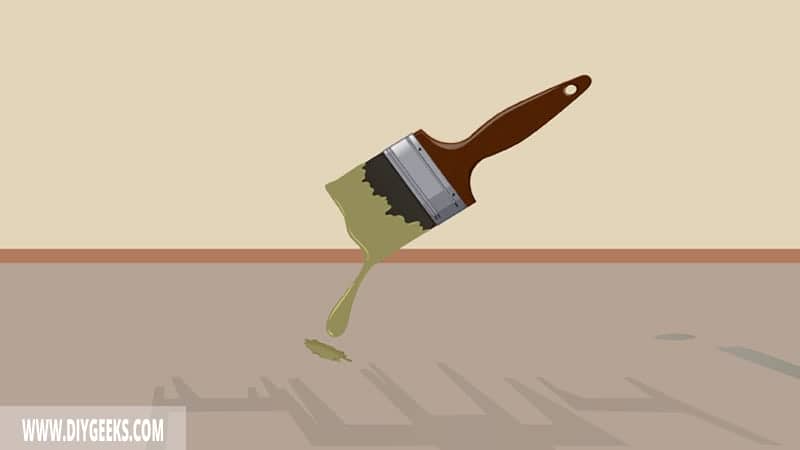
Test the thinned wood stain on a dispensable material. If the wood stain viscosity and color are consistent, you don’t need to thin it anymore. If the finish color shade is inconsistent or too light, add more wood stain to the mixture and mix them again.
Which Products Can You Use To Thin Wood Stain?
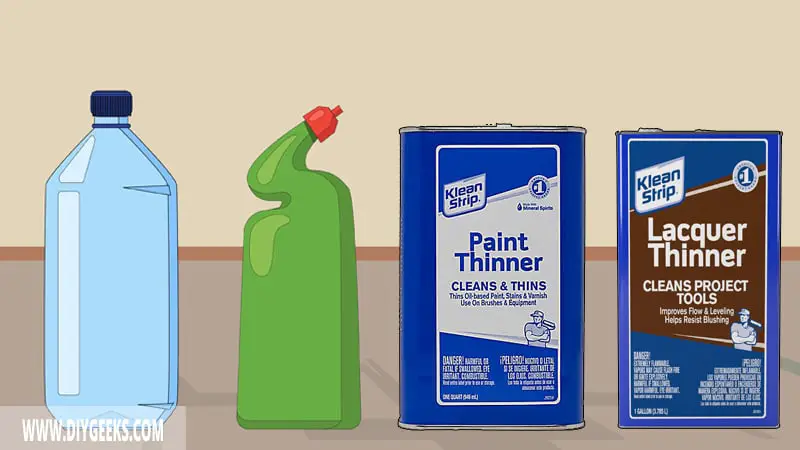
The products you can use to thin wood stain are listed below.
1. Water
You can dilute water-based wood stain with water because it uses water as its solvent. The more water you add, the thinner it gets.
You can’t thin oil-based (or lacquer) wood stain with water as they use oil as their solvent, and oil and water don’t mix.
2. Paint Thinner
You can dilute oil-based and lacquer wood stain with paint thinner. To dilute water-based stain, use water-based paint thinner.
Paint thinners are made from a combination of turpentine, mineral spirits, acetone, xylene, naphtha, and toluene. These compounds are not compatible with water-based stains.
3. Mineral Spirits
You can use mineral spirits to dilute lacquer, oil-based, and gel stains only. Instead of mineral spirits, you can also use Varsol because it contains mineral spirits (although not in its pure form).
4. Acetone
Acetone can thin wood stain, but you can ruin the coating if you aren’t experienced enough. That’s because acetone is a natural paint remover and will separate the binder from particles.
Does Thinning Wood Stain Change Its Color?
Thinning wood stain doesn’t change its color, it only makes its viscosity or consistency lighter. The color is only affected if you add too much paint thinner (you over-thin it). The color isn’t affected if you dilute it with the right amount of thinner.
Thinning only affects the flow (coating) of the wood stain. This means a thicker coating will become lighter or less thick.
When you thin a coating, the amount of the solvent in the formula increases. In other words, the solvent-to-stain ratio increases in favor of the solvent, and this makes the flow lighter.
